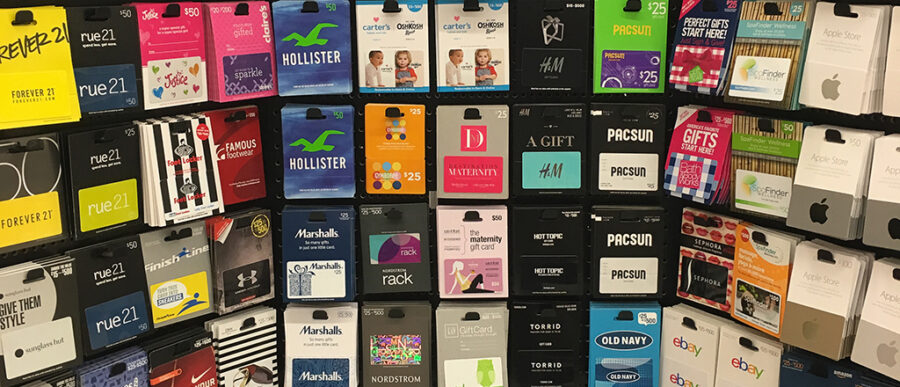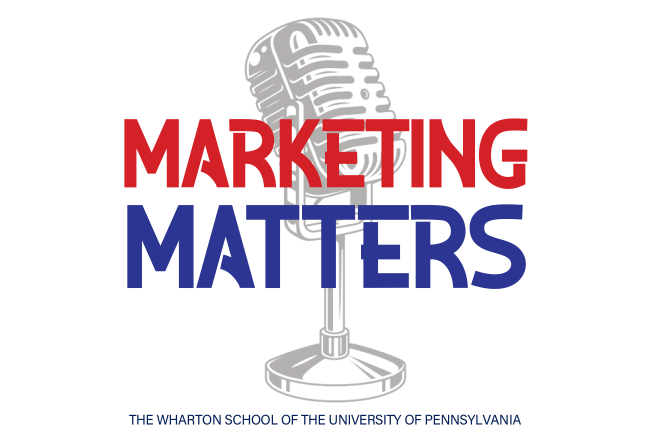By gathering and examining data that was more detailed than what retailers have been able to access before, research group NPD and Wharton’s Jay H. Baker Retailing Center have unearthed a host of new information about generational differences in buying behavior. Baker Center research director Denise Dahlhoff and Andrew Mantis, executive vice president of checkout tracking at NPD Group, appeared on the Knowledge at Wharton show on Wharton Business Radio on SiriusXM channel 111, to talk about what they’ve discovered about our retail proclivities.
An edited transcript of the conversation appears below.
Knowledge at Wharton: First, Denise — let’s dig into the partnership between the Baker Center and NPD.
Denise Dahlhoff: We were actually very fortunate to start this partnership, because we were both interested in finding out how different age groups are shopping. NPD Group has this amazing database of receipts that many, many people have submitted over time, so we looked at that data to find patterns.
Knowledge at Wharton: And Andy, talk a little bit about working with Wharton on this partnership.
Andrew Mantis: Certainly. It’s a true collaboration. NPD’s Checkout Tracking is based on receipts. The data is mined from millions of receipts sent to us by actual consumers. So we’ve got really precise, item-level detail about individual consumers that cuts across stores, categories, brands, brick-and-mortar and online. And the blend of our data acumen and industry knowledge, combined with Wharton and Denise’s knowledge level, was a really nice combination to turn the data into what we think is a really interesting study about generational buying behavior.
Knowledge at Wharton: What are the trends that you were hoping to find?
Mantis: It’s a good question. It’s that intersection of generation life stage, and the way people purchase. Because if you think about it, there are some things that are common. You get your first house, have your first child. That’s going to influence purchasing. That’s obvious. But what’s less obvious is, what are the drivers underneath for each generation? That’s what we were looking for — not necessarily the obvious, but those true generational differences that then matter. As you said, there’s a big need for retailers to understand buying behavior. But it’s also hidden. And we found some interesting insights.
Knowledge at Wharton: Is it a little bit easier, these days, to be able to start to decipher some of these trends because of the ability to collect this data more easily, due to the digital nature of so many things?
Mantis: There are many more sources. What we find is, there are a lot of individual point sources, maybe just for some online purchasing or some specific categories. What’s still really hard to get, which we feel is unique, is that holistic view of someone’s full discretionary spend. That’s one of the things that we were going for — that view of whether you’re shopping for grocery or whether you’re shopping for auto parts, or whether you’re shopping for apparel. That view across is still challenging. And that’s one of the things that we were able to bring to the table in working with Denise.
Dahlhoff: However, actually, technology has enabled that because when people submit their receipts, it’s through an app — they just take a picture of the receipt and can easily submit it. So you’d make it really easy for people to participate in the panel, which helps the database.
Mantis: You’re right. And when you think about it, these technologies, these enablers wouldn’t have existed a decade ago, which allows us in market research some benefit. Then on the retail end, it causes a lot of disruption. The app-based universe is causing tons of disruption for retailers.
Knowledge at Wharton: From a grand scheme overview, what are the biggest differences in spending patterns that you were able to see through some of this data between millennials, and Generation Xers?
“One really interesting finding that we also saw was that millennials buy more gift cards than other generations — but only in certain channels.”–Denise Dahlhoff
Dahlhoff: In general, let’s think about some of the hypotheses and expectations that you might have. For example, that younger consumers might be more focused on app-based services and products, even food delivery options like GrubHub and Seamless. And then, thinking about the other end of the spectrum in our study, the boomers, you would expect they may be more focused on traditional kinds of retailers.
For example, we saw that online, millennials were more focused on these app-based options like Starbucks, Uber, Lyft and so forth. But also, some of the flash sale sites like Gilt and HauteLook. The boomers, on the other side, were focused more on multichannel retailers, especially department stores — traditional retailers that eventually moved online and now have multichannel operations. You see them favoring a lot of department stores, but also Costco, Home Depot and Lowe’s. Because again, it’s reflecting their life stage. However, another finding with boomers was that they are over-indexing on QVC. That … was definitely very popular for boomers.
Knowledge at Wharton: It really does show that the older generation has still got to want to get out there and do their own shopping. Sure, they’ll have some sort of digital connection to it, but more and more, millennials are relying on that digital connection.
Mantis: Yeah. There’s no question about it. And as Denise said, it was really interesting. We start to look at those buying behaviors. For online, the boomers are going where they’re comfortable. Whether it is a QVC or a Macy’s, it’s a store they’re comfortable with. The Gen Xers are kind of in between. They’ll be picking up some of the online pure plays like a Zappos or a Zulily.
Another important point is, millennials are a big group. That’s 18 to 34. In this study, we broke them down into younger millennials and older millennials. And even there, we see a difference, because with the older millennials, you’ll see some more of the life-stage stuff coming in involving having kids and buying a home. But the millennials in general were clearly the early adopters of services like Lyft and Uber.
The other aspect to millennials, which is an important implication for retailers: They skew very heavily to buying in specialty stores as opposed to department stores. On the other hand, they’re the future of discretionary income. So if you’re a department store, as millennials are aging, you have to start creating strategies that will resonate, because millennials like experiences. Otherwise, it’s going to be a more difficult future for you.
Dahlhoff: And part of that can also be having “stores in stores” in department stores, because as Andy said, millennials like specialty stores. So creating that environment in a department store could actually help.
Knowledge at Wharton: Are we going to see more downsizing of the big department stores because of the competition from specialty stores? Or will those department stores just keep adding specialty pieces to themselves?
Dahlhoff: It could be that. It could also be that they are creating specialty of their own, for example, by launching private-label brands. That has been happening, of course. Or having specific sections for millennials, like Macy’s has in New York, in their Herald Square store in the basement. Those are ways for retailers to cater to that need.
Mantis: … The store does still have to resonate and be something that provides a good experience to those millennials. They’re still very focused on brand. A different kind of example is the online players that are setting up physical locations — Bonobos is an interesting one. It started purely online, and now they have select stores where you can’t actually walk out the door with merchandise, but you try it on there. And they’re very, very successful with millennials.
“For online, the boomers are going where they’re comfortable. Whether it is a QVC or a Macy’s, it’s a store they’re comfortable with.”–Andrew Mantis
Knowledge at Wharton: You’ve run some of these ideas out with quite a few retailers over the last few months. What’s been the reaction from the retailers that you worked with, in terms of the information that you’re providing?
Mantis: It’s been a terrific. It’s really been a good reception and been adopted in very, very different ways.… I can give you a quick example. We worked with a manufacturer that makes memory cards like you’ll put in a camera or a GoPro. We looked to see, when people bought cameras and even drones — all sorts of devices — did they buy memory cards at the same time or not? They found that people would buy something, and then maybe two or three weeks later, go buy their memory cards. So what happened is, a nice partnership formed between Micron, which does the Lexar memory chips, Target, and GoPro. Together, they had a shrink-wrapped bundle at Target. So it was very much a win-win, right? Instead of Target losing that memory card business later on, everyone had it in the bundle.
A very different kind of example — we were talking about retailers, but I thought this might be kind of a fun one — is McDonald’s breakfast. Huge amount of press.
Knowledge at Wharton: Absolutely.
Mantis: But how do you know whether it’s not just the [regular] McDonald’s customer trading a Big Mac for a breakfast sandwich, because it’s all day. So — and again, this is public information, we do respect the privacy and confidentiality of our customers, so we’re a little bit careful about what we name. But with McDonald’s, we did find that in fact, they were drawing in new consumers. People who hadn’t eaten in McDonald’s in the last six months were coming and buying breakfast items at non-breakfast hours. That meant it was [increasing] their business, not cannibalizing it. When you’re able to provide those kinds of insights, it’s usually pretty well received.
Knowledge at Wharton: The other piece to this is that this data can help retailers across the board. It’s not just one segment of retailers. You mentioned McDonald’s. It’s not that it’ll just help the fast food industry. This will help retail giants like Macy’s, and potentially, medium-sized business as well. This is stuff that will affect all kinds of different retail industries.
Mantis: That’s right. We’re able to provide fantastic transparency. And it’s really a view, because it’s all consumer opt-in, and all very privacy-friendly. We’re not talking about names and addresses. But we are talking about the same individuals over time. So not only is it insight into their buying patterns, but we can see patterns across retailers — who’s winning or losing, the brand-switching. Is someone becoming more loyal or less loyal? Maybe if you introduced eggs [to your menu] at night, you would have a growing loyal customer base. We’re able to provide that view over time, which also makes it more actionable.
Dahlhoff: One really interesting finding that we also saw was that millennials buy more gift cards than other generations — but only in certain channels. And it’s those channels that offer these card malls, where you can buy gift cards for restaurants, for telecommunications companies.
Knowledge at Wharton: For Google, for eBay, you name it.
“If you’re a department store, as millennials are aging, you have to start creating strategies that will resonate, because millennials like experiences.”–Andrew Mantis
Dahlhoff: Other stores. Exactly, exactly. We saw that in convenience stores, mass merchants like Target and Wal-Mart, as well as in warehouse clubs, millennials would spend a higher share of their money on gift cards. And so one questions: Why is that?
There are actually several reasons. And gift cards have been very popular across the board over recent years, but especially with millennials. You can explain it as, they’re fast and easy to buy. It has been said that millennials like to get things done fast and easy. And then you also have a lot of e-cards now, which makes it even easier. You can’t lose them. There are even apps where you can organize your gift cards so you have them with you at all times. And also, it’s a very practical gift. Millennials grew up when the Great Recession hit, so they are definitely more financially cautious. If you give a gift card, there’s no waste on unwanted gifts or the hassle of having to return them. All that seems to really play well with millennials.
… And now you can even personalize the gift cards, because some people, especially from older generations, are reluctant to give gift cards. But if they do, they prefer giving a card to a specific store. However, like with online gift cards, you can customize them now with messages or images or you can attach a video. So it’s a bit customized as well.
Knowledge at Wharton: For the businesses out there, what is the big gain from this type of research that they can really expect to see maybe in the next 10 to 15 years?
Mantis: Retailers are good at having a view of what customers are doing with them. But they don’t have an easy way to understand how consumers’ behaviors are changing outside of their stores. What we’re able to provide are two things: one, a very transparent view to where else their consumers are buying with competitors, which obviously is actionable. You can change your assortments, your merchandising, your pricing strategies and your marketing. But two, with the holistic view, we can see the overall trends — the macro trends that tie to the generations that form some of the bigger strategies. If I were to give you a sound bite on millennials, I’d say, OK, we know they’re health conscious. But when they want to splurge a bit, they’re going to In-And-Out Burger. It fits their lifestyle. They want value and quality. So they may be going to Nordstrom Rack and Nordstrom. They like physical and digital goods. They’re spending more and more of their discretionary income on things like these mobile game downloads. And what we talked about earlier with apps, it’s multichannel. So for us, what I think is, you’ve got a lot of really great short-term tactics that the data can help with, and then also inform these macro-buying trends.
Dahlhoff: Yeah, I think generally, there were so many detailed findings that you can leverage for your marketing strategies — thinking about the individual segments, but then also, pretty much all generations buy at mass merchants. But thinking about your individual segments and how you can serve them best. For example, mass merchants are more popular with younger segments. And Target is a great example of a retailer that has really tried to cater more to that big customer segment by offering more home goods and kids products. There are even, in some pilot stores, advisors for those categories to help shoppers when they make purchases, to give them advice. You know, first-time parents might need that for the kids category. Or for home, they have launched more private-label lines for that group. And they are also thinking about healthier food, because as Andy said, millennials in particular like healthy food options.
Mantis: What’s also interesting: Food is becoming more and more intertwined with retail. The study had some interesting findings on convenience stores, where the generational buying patterns were so different. The boomers were mainly getting gas. The millennials were buying a lot of groceries. So if you’re in the convenience store business, you need to cater some of your food assortments to millennials, as opposed to boomers. Right? So even at places like convenience stores, we’re finding large differences in buying patterns where, if a retailer is not addressing them, some of them will do better, and some won’t.
“The study had some interesting findings on convenience stores…. The boomers were mainly getting gas. The millennials were buying a lot of groceries.”–Andrew Mantis
Dahlhoff: I think another thing that it reflects is this convenience orientation. Like literally, the convenience in the convenience store. We think about the checkout process to make it really efficient and easy to get in and get out, because that seems to be one of the needs that consumers have.
Knowledge at Wharton: What about the move by McDonald’s, which has in some locations gone away from actually talking to somebody to place your order, and gone to the touchpad screen to do your ordering instead?
Mantis: That’s interesting. You know, we haven’t measured that specifically. That might be a good follow-up, taking a look at some of those stores. But at the end of the day, if it’s driven by an operational point of view, that would be one thing. But my sense is the success will be the customer experience. If the touchpad’s providing a better customer experience, it’ll be great. If it’s for cost savings, and it’s not providing the experience, I don’t think that would be the way to go.
Dahlhoff: Another example where this has worked really well is Starbucks, because they see now that many people preorder their beverages before coming to the store.
Knowledge at Wharton: Over an app.
Dahlhoff: Not that they don’t like the human interaction, but just to save time and be convenient.
Mantis: Well it’s a win-win, right? It’s helping Starbucks for logistics. And — Denise to your point — it’s super convenient. And they execute beautifully on their app, too. They make it a great experience for the consumer.



